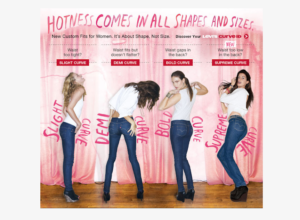Do you know how brand images are formed?
Come behind the scenes to my kitchen project and take a look.
I was seeking a tile contractor to install a new backsplash in my kitchen. My aim was to get three bids. I got a list of names from two tile retail stores and contacted seven contractors.
Two contractors called back within an hour and set up a time to come to my home within 48 hours. A third called the morning after I left the message and was there the next day.
Contractor #4 hemmed and hawed about his availability and asked me to call him two weeks hence.
Number five sent a four-word email response saying he could come by in a week.
The sixth called a week after my inquiry to say I could email him a picture and he would work up a bid.
The seventh did not call back.
The first three contractors got classified in my mind as “responsive and interested.” I categorized the latter four as “less or non-responsive, not eager for the work,” and set them aside.
The first visiting contractor was straightforward in his approach and transparent in his bid, including only the labor.
The second one name-dropped that he was awaiting supplies to do a project for a neighbor of Bob Kraft, but could fit me in. His bid was double the first one.
The third contractors were a friendly couple who gave me a detailed idea of how they would mount the tile and raised an issue that no one else had.
While waiting for the third bid, I now think of the three as Mr. Straightforward, Mr. Name Dropper and The Friendly Couple with the Detailed Ideas. All responsive and interested in the work.
Perhaps you think I’m being harsh or too quick to judge? I am simply being human.
We Brand to Survive
Humans’ tendency to classify things is well documented. Psychologists link this tendency to our earliest iteration as humans when we learned to assess an encountered animal as predator or prey. Taking time to make that judgment could be the difference between finding dinner and being dinner.
Most brand encounters risk less dire outcomes now.
Few of us are dodging predators, but all of us are fielding an avalanche of communication. We don’t have time to process every choice we face anew.
Just to survive, we accumulate associations through experience with an entity – a brand – so the next time we encounter it, we have a reference point for action.
Oh yeah, that was the company that gave me free shipping on my return and a refund with no questions asked. I’ll do business with them again.
Or…that was the company that did not respond to my inquiry for a week. I’ll not waste my time.
The more experiences you have with a brand, the more extensive and nuanced your image of it and your feelings toward it become.
So how does this relate to your brand?
I’m glad you asked.
Undeniable Truth #1: You Have a Brand.
If you are doing business with people, you have a brand.
Whether you’ve decided to have a brand, you’ve got one. Whether you’ve created a logo, penned a tagline, posted a website or none of the above.
You cannot stop people’s brains from gathering impressions associated with your brand name.
What they think when they see your product on a shelf or your posts on social media, to their experiences with sales people and customer service, to their product usage experience – all contribute to their image of your brand.
Like the images forming in my mind of the contractors I contacted.
And it’s not just your customers who develop an image. Management, employees and vendors do too. Anyone who comes in contact with your brand opens a file in their brain and begins to accumulate associations.
Which brings us to our second truth.
Undeniable Truth #2: You Cannot Control Your Brand.
You can influence your brand, but you can’t control it. More on the influence part later.
If you are an entrepreneur and launched your product, you got a shot upfront to tell the world what your brand sought to achieve.
Like a child going into the world though, once launched you cannot control your brand.
People interact with your brand unbeknownst to you. They see your advertising and social media posts, interact with your employees and distributors and use your products all out of your view and earshot.
The longer it is in the world, the more your brand’s audience has time to experience it and formulate their image.
Undeniable Truth #3: Your Perception of Your Brand May Differ from Your Customers’ Perception.
This is where some brands’ marketing runs into trouble.
You and your marketing team have a certain perception of your brand and choose marketing messages based on that perception.
But if your audience sees it differently those messages won’t resonate.
Marketing that is off key with a brand’s reputation can ring false. It wastes your marketing funds and in extreme cases does more damage than good to your brand.
 Like when Levi’s tried to portray their brand as inclusive by proclaiming “Hotness comes in all shapes and sizes,” but featured only thin models in their ad. Their message struck many as hypocritical.
Like when Levi’s tried to portray their brand as inclusive by proclaiming “Hotness comes in all shapes and sizes,” but featured only thin models in their ad. Their message struck many as hypocritical.
How do you deal with this?
Finally, a bit of good news!
Undeniable Truth #4: You Can Influence Your Brand.
Though you can’t control your brand, you can influence it by communicating clear and consistent messages that meld your aspirations for your brand with your audience’s experience with it.
But first you need to understand your audience’s perception of your brand.
You can’t do that from behind your desk.
You have to get out into the world and talk to people about your brand. Most important, you have to listen.
Listen to your employees, your customers, your business partners. Spend time answering your customer service line if you can.
Some people will temper what they will share if they know you are associated with the brand. It’s not a knock on you; they were taught from the time they were little “if you don’t have something nice to say, don’t say anything at all.” They are trying to spare your feelings.
The counter to this is to have an objective third party listen and report back.
A combination of listening directly and an objective reporting is optimal.
Once you have digested what your brand’s constituencies feel about it, you can begin to incorporate their perceptions into your future marketing.
So how are you doing? I’ve thrown a lot of brand truth at you.
Can you handle the undeniable truths about your brand? I thought you could. I didn’t want to go all Jack Nicholson on you.
Start planning your consumer listening and call me if you need help. I’ll be here hoping to get that third bid so my kitchen can get its backsplash.
If you liked this post, you’ll love the next one.
To have future posts sent to your inbox...

